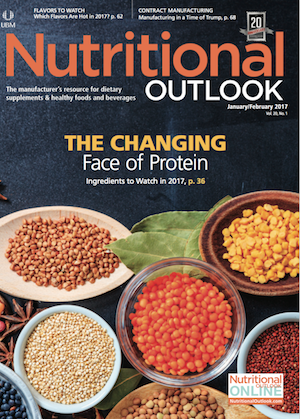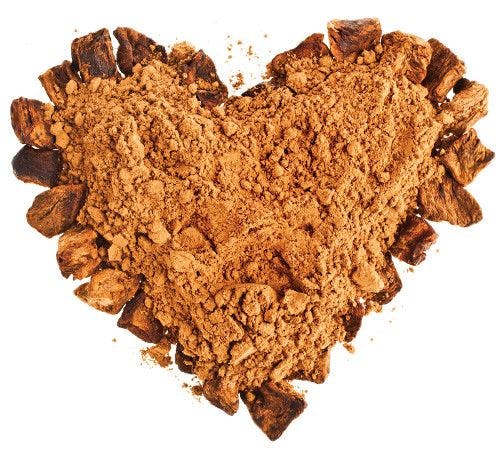2017 Ingredient Trends to Watch for Food, Drinks, and Dietary Supplements: Hemp CBD, Vinpocetine, and Kratom
Regulatory controversy may continue to follow hemp CBD, vinpocetine, and kratom this year.
Photo © iStockphoto.com/_ba_. Edited by Quinn Williams.

Every year, a batch of ingredients falls under intense regulatory scrutiny, and 2017 looks to be no exception. At the top of the list is kratom (Mitragyna speciosa), an herb native to Southeast Asia that delivers opioid-like effects. Some experts say kratom’s physiological effects help prescription-opioid users and heroin addicts wean themselves off their addiction. The Drug Enforcement Agency (DEA), however, recently indicated it views the herb as a threat to public safety.
In an announcement issued last August, the DEA said there “does not appear to be a history of use or other evidence of safety establishing that kratom will reasonably be expected to be safe as a dietary ingredient,” and that it therefore intends to classify two of kratom’s psychoactive constituents, mitragynine and 7-hydroxymitragynine, into the Schedule I list of banned substances under the Controlled Substances Act (CSA). The move, which would effectively place kratom on the same list of banned substances as heroin, is based on what the DEA called kratom’s “high potential for abuse,” as well as other negative health outcomes proposed by FDA, including hallucinations, nausea, respiratory depression, and more.
Industry reaction to the DEA’s proposed action have been mixed. Some, including the American Herbal Products Association (AHPA; Silver Spring, MD) and the American Botanical Council (ABC; Austin, TX), have urged the DEA to reconsider. In comments submitted to the agency, both AHPA and ABC argued that adding kratom to the Schedule I list would have a stifling effect on research into the herb’s potential therapeutic benefits.
The Natural Products Association (NPA; Washington, DC), on the other hand, largely agreed with the DEA’s concerns into kratom’s safety and proposed action. Dan Fabricant, CEO and executive director of NPA, even highlighted the issue in a recent letter to President Trump, urging the new administration to support enforcement against kratom ingredients and products.
Another controversial ingredient to watch is vinpocetine, a synthetic ingredient produced from an alkaloid of the lesser periwinkle plant (Vinca minor). FDA took industry by surprise last year when it announced its “tentative” conclusion that vinpocetine does not qualify as a dietary ingredient, despite the agency acknowledging five separate new dietary ingredient (NDI) notifications for vinpocetine since 1997.
The agency’s reasoning? For one, FDA argued that vinpocetine fails to meet the definition of a dietary ingredient because it is not a vitamin, mineral, or amino acid; it is synthesized and is therefore not a constituent, extract, or derivative of an herb or botanical; and because there are no documented food uses of vinpocetine. The agency also said the ingredient was authorized for scientific investigation as a new drug in 1981, which would nullify vinpocetine’s status as a dietary ingredient under the investigational new drug (IND) provision of the Federal Food, Drug, and Cosmetic Act (FD&C Act).
Industry leaders were quick to challenge FDA’s conclusion. Duffy MacKay, ND, senior vice president of scientific and regulatory affairs for the Council for Responsible Nutrition (CRN; Washington, DC), said that “once FDA has concluded that an ingredient is a lawful dietary ingredient by acknowledging an NDI notification, the agency should not revisit the ingredient’s status unless it has safety concerns.” Striking a similar tone, NPA’s Fabricant suggested such action to remove vinpocetine from the market would set a “dangerous precedent” of reversing the agency’s own past judgments and would “do nothing to protect consumers.”
Then there’s hemp CBD (cannabidiol), the longtime bad boy in the supplements space. CBD inspired a fresh wave of headlines in December when the DEA published a final rule in the Federal Register clarifying that "marijuana extracts" like CBD “will continue to be treated as Schedule I controlled substances.” While that announcement triggered a barrage of alarming media coverage suggesting CBD had suddenly become a Schedule I substance, the real implications may be far less dramatic. Eric Steenstra, executive director of the Hemp Industries Association (Summerland, CA), says the DEA is actually not treating CBD any differently than it has in the past. The agency has always considered CBD as part of the Schedule I list, Steenstra says, even as it’s displayed a history of allowing the CBD industry to move forward-suggesting the DEA doesn’t view CBD as a threat to public health. Steenstra says he doesn’t expect the latest final rule, which establishes a new drug code for marijuana extracts, will result in the agency taking new enforcement actions. The DEA’s clarified stance on CBD could have negative consequences, however, if other federal agencies-such as the USDA-take the announcement to mean that CBD products should be strictly enforced against, Steenstra says.
In a year guaranteed to bring change to the federal government with a new president, it’s hard to say for sure where CBD, vinpocetine, and kratom will be sitting twelve months from now.
Read more:
Will Hemp CBD’s Regulatory Controversy Help or Hurt Its Future as a Supplement Ingredient?
7 Ingredient Sales Surprises of 2016
2017 Ingredient Trends to Watch for Food, Drinks, and Dietary Supplements:
Plant Protein vs. Dairy Protein
Hemp CBD, Vinpocetine, and Kratom
Michael Crane
Associate Editor
Nutritional Outlook Magazine
michael.crane@ubm.com

HHS announces restructuring plans to consolidate divisions and downsize workforce
Published: March 27th 2025 | Updated: March 27th 2025According to the announcement, the restructuring will save taxpayers $1.8 billion per year by reducing the workforce by 10,000 full-time employees and consolidating the department’s 28 divisions into 15 new divisions.






















